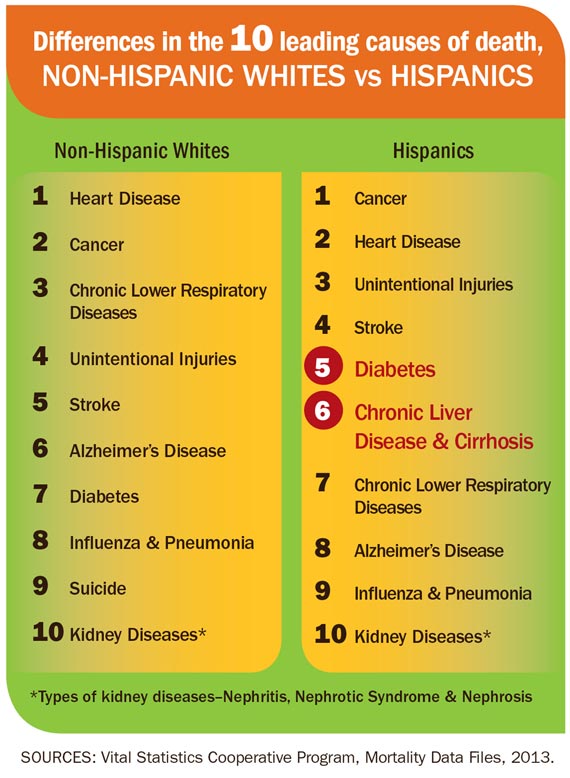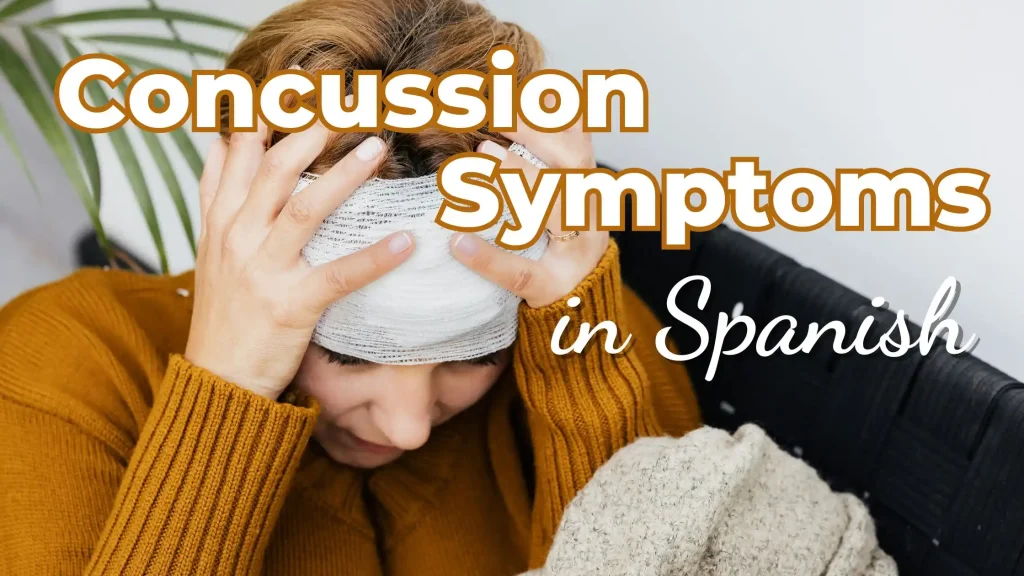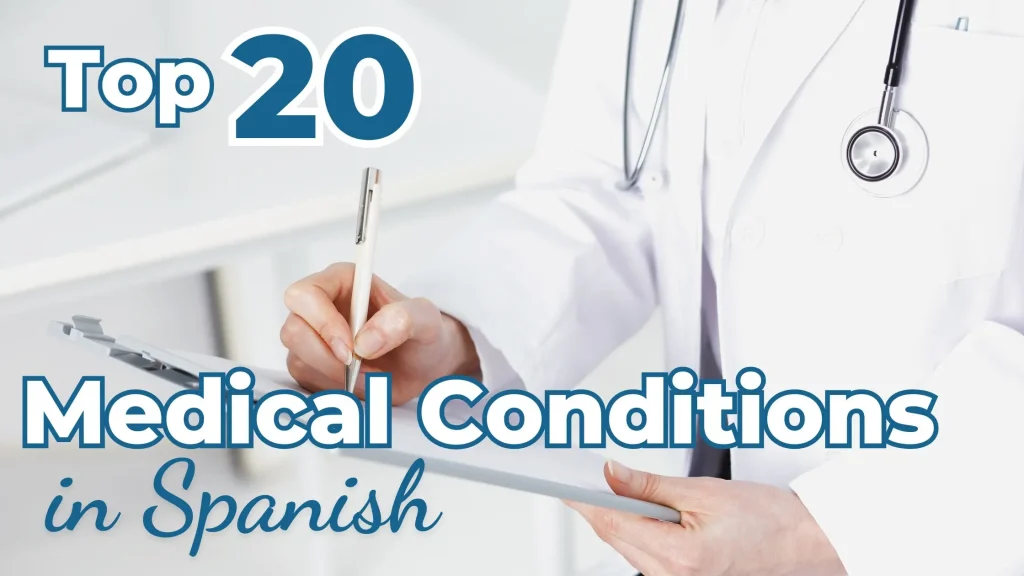The CDC recently released some health statistics about the hispanic population that you should know about…and they’re super helpful for identifying medical Spanish topics to study.
Do you ever feel like you want to study medical Spanish, but you’re just not sure what to focus on? If I were you, I would take a look at the recent report published by the CDC (May ’15) regarding current health risks for hispanics.
Here is a summary of what you’ll find in the full report with some suggested medical Spanish topics to study. In general, my suggestion will always be for you to look for a connection between these important health risks and the work you do with your patient population. If there is a way to tie the two together, you’ll surely have ample opportunity to use the language around these topics.
Summary:
- The hispanic death rate is 24% lower than the death rate of whites, but hispanics are 50% more likely to die from diabetes or liver disease than whites
- Hispanics have 24% more poorly controlled high blood pressure
- Hispanics have 23% more obesity
- Hispanics receive 28% fewer colorectal screenings
The study goes on to detail variance within the hispanic community in the USA and describes what the federal government is doing to help the hispanic community. It also makes suggestions about what healthcare professionals can do to help their patients. Here is one of the charts that the CDC has put together about leading causes of death for Hispanics as compared to whites.

It’s an interesting article, give it a read if you haven’t already!
So, now back to you – what are the Medical Spanish topics that make sense for you to study and find a way to connect with your patients over?
- First and foremost, I assume this is not a surprise to you, but if hispanics are 50% more likely to die from diabetes or liver disease than whites, this is where I would start with brushing up my vocabulary. You may not deal with these conditions on a daily basis, but there is an awful lot of patient education that can be connected with this statistic. My mind immediately goes to topics like:
- Interview questions around diet (like ¿Qué es lo que come usted en un día típico?) that fits the hispanic palate, but is healthy, nutritious and with a low glycemic index.
- Family medical history questions (like ¿Alguién en su familia ha padecido de diabetes/azúcar?) and linking your patient’s role in his/her family to the reality that a healthy diet will help them fill that role well for the long haul.
- Exercise options that fit your patients’ access to equipment, facilities, lifestyle and personal preferences. You might ask questions like ¿Le gusta some type of exercise? Hint: the type of exercise will be a verb in the infinitive in this structure (correr, caminar, jugar fútbol, bailar, etc). Simple instructions like: Usted necesita activity por 30 minutos por día, are super clear and easy to form.
- Brush up on your interview questions and key vocabulary around lifestyle habits that reduce risks of liver disease and cirrhosis. You may want to dive into the effects of alcohol (best translated as licor in Spanish) on the liver and healthy drinking habits that are proven to be safe-ish :). No más de is the simple way to say “no more than” if that’s helpful. You should know that there are some cultural aversions to someone talking about how much they drink, and in some places it’s looked down upon to drink during the week…but give it a shot. If you feel like you’re not getting anywhere with your patient on this topic, you may consider the indirect route of talking to a family member if they’re concerned about anything and/or talking to your patient about anything that they perceive their family may be concerned about for them. Often an indirect communication style will get you further in a conversation than a direct style. I wrote a blog about indirect communication a while ago – give it a read!
- Also high on the list as far as leading causes of death in Hispanics would be heart disease. Brushing up on diet and exercise conversations will go a long way in this conversation as well.
- Unintentional injuries also makes the top 3 leading causes of death in hispanics. It’s tough to know exactly what these unintentional injuries include without digging deeper into the study, but I would hazard a guess that things like auto accidents (fertile ground for discussions around seat belts, drinking while driving, etc) and work-related injuries are players in this category. You can’t go wrong if you take some time to discuss the merits of consistent seat belt and proper car seat usage with your patients, right? Try a question or two along these lines: ¿Con qué frecuencia usa el cinturón de seguridad en el carro? or ¿Su bebé siempre está abrochado en su asiento de seguridad / silla infantil?
If you’re like most people, you get “decent” at your day to day conversations with patients because they’re routine enough for you to have a good sense for what to ask and how your patient will typically answer. However, my recommendation is for you to take a look at the study and find areas of overlap with your Spanish only patients that are relevant for your work with them and start lining out high frequency questions and important concepts that fit the topic. Once you’ve got that identified, you’ll have a clear path of necessary vocabulary to study. Enjoy!
Don’t forget about the free medical Spanish vocabulary sets we have uploaded to Quizlet for you. And as always, if you need help learning medical Spanish, please keep Common Ground Int’l in mind. We’d love to help you on your journey!
We welcome your comments below & contact us if you need anything!
Btw: If you’re working on learning Spanish for your healthcare career, we have the medical Spanish you need!
Keep up the good work speaking responsible Spanish to your patients! Check out our other books, classes & products to help you !
*If the link isn’t working for you, you may need to unblock pop-ups in your browser settings





